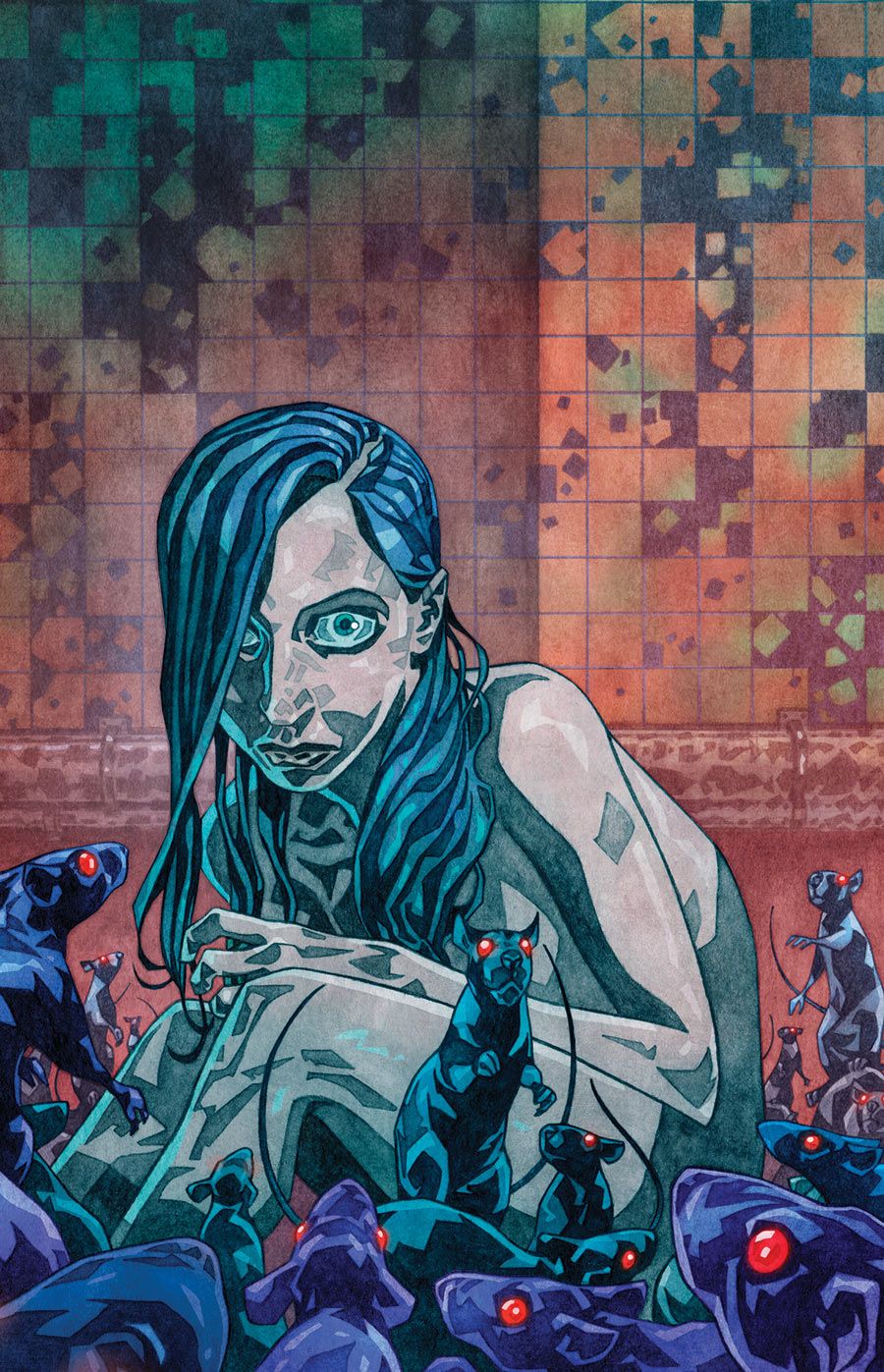Naked and stranded in an abandoned subway station, a young woman awakens to a swarm of rats and multiple superhuman abilities in Greg Rucka and Tony Fejzula's "Veil" #1. With a plot that almost defies description due to its impressive depth, Rucka and Fejzula develop a story that will grip readers and refuse to let go, using careful dialogue and Fejzula's distinctive style as a guide. "Veil" has the look and feel of a promising horror comic but, in the end, it's the book's bewitching character work that is guaranteed to enthrall.
"Veil" opens with a mystery and deepens it with each subsequent panel; there are no questions answered here, only more asked, and that's a refreshing direction brought to the book by an author who clearly trusts his audience and his story. Every clue slowly builds off the one before it, weaving together subtle aspects of setting and character, and moves deliberately towards the concluding question: "Who am I?" The setup is meticulously crafted; the result, captivating.
Without such strong character work, this question and the build towards it would certainly have lost the reader's interest. In the capable hands of Greg Rucka, however, it's the most fascinating aspect of the book, as he delicately infuses the aura of something new yet ancient into our questionable protagonist. Although the bulk of her dialogue reads as nonsensical, she appears to delight in the very act of speaking as she rolls rhyming words off her tongue. She clearly has a grasp on the language - she needs no help speaking it and responds readily to others as she chooses - and may even have the ability to read; after all, she stands beneath a glowing "Seven Veils" sign for a few panels before she names herself. She's more than aware of her own abilities, using super strength without batting an eyelash, and yet never pauses to acknowledge (or perhaps even disregards) social convention as she wanders, naked and unfazed, through a crowded street. As she emerges onto the street, she whispers "new" in regards to the building and lights, and later discovers her own face in a television screen. Considering this and more, her characterization is fluid and layered, steeped in intriguing nuance. What's more, Rucka fleshes out other realistic personalities throughout the story and, in Dante, gives us someone to root for. If anything will pull a reader back for the next issue, it's these riveting and complex characters.
Fejzula provides the book with its distinct look, establishing a horror vibe through an effective use shadows. From the very first page, he sets the mood with dark but muted colors like turquoise, purple, and burgundy that create the book's dread-filled atmosphere and carry it throughout. What's more, he works off of Rucka's character development in wonderful, insightful ways. It's Veil's blank expression and wide eyes that truly reveal the ethereal, "new but ancient" feeling that Rucka foots in the dialogue; without this, the book would be nowhere near as effective. Beyond Veil, his figure work is diverse and articulate; every character has a personality, even those in the background, with their natural but distinguishing features. Fejzula populates the book's settings with calculated, precise details, from the dirty abandoned subway to the crowded streets to Dante's small but lived-in apartment. Utilizing thick colored lines instead of inks, his style is distinct and unique in all the best ways.
Especially for a debut issue, "Veil" #1 is absolutely engrossing and so quick a read that it will leave fans begging for more. With naturalistic dialogue, riveting characters, and a genuinely fascinating mystery, "Veil" will haunt readers for days to come.

